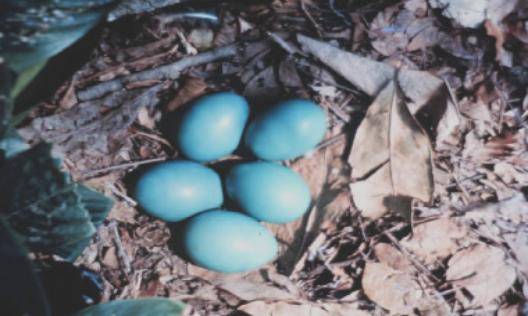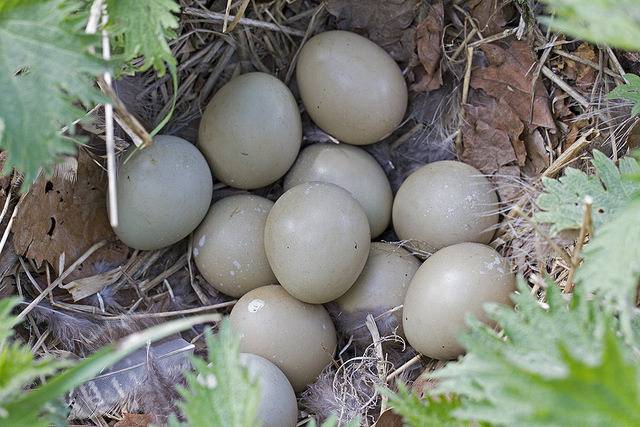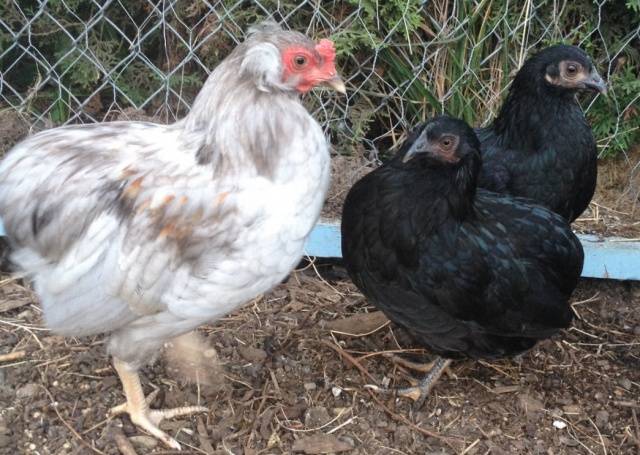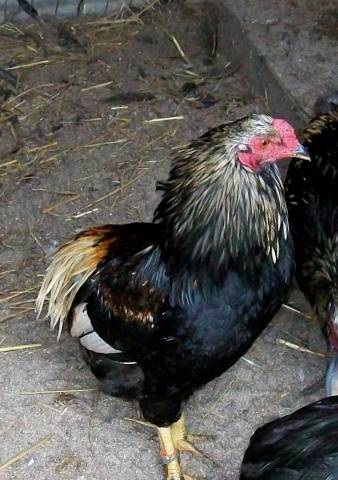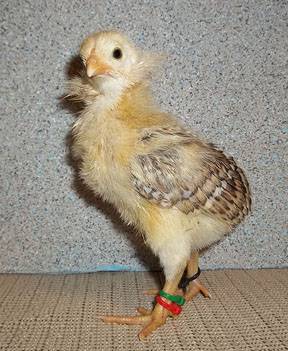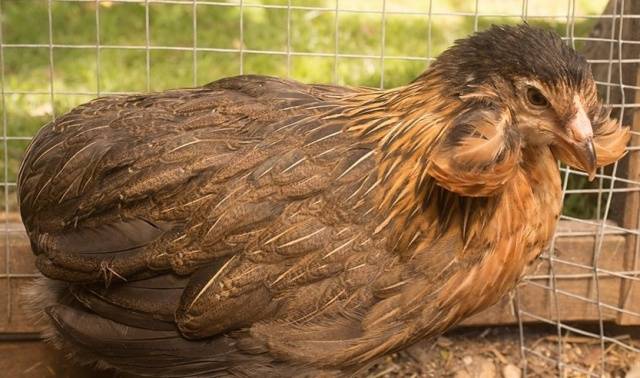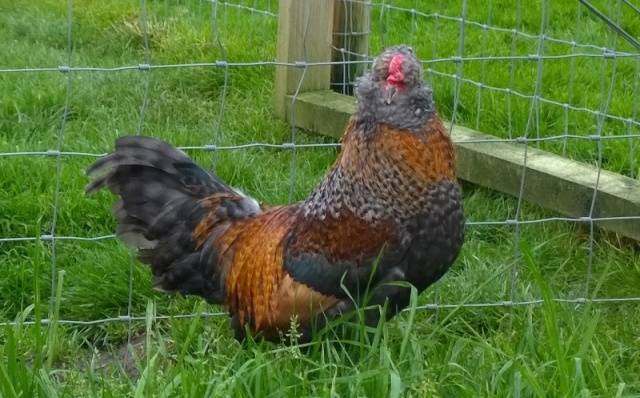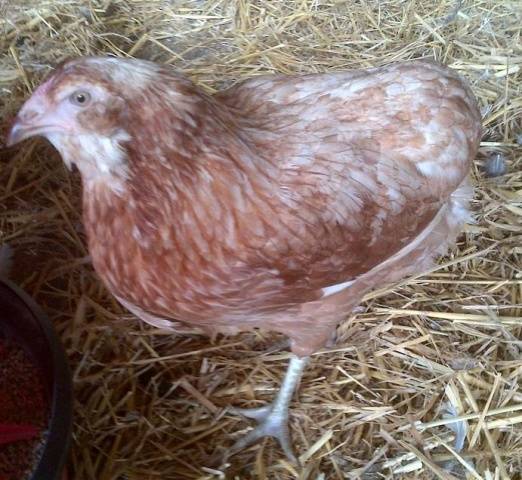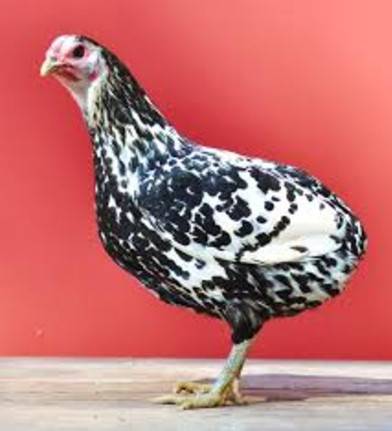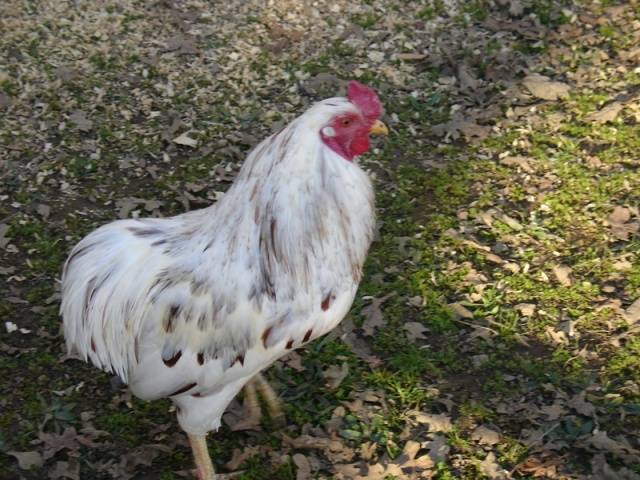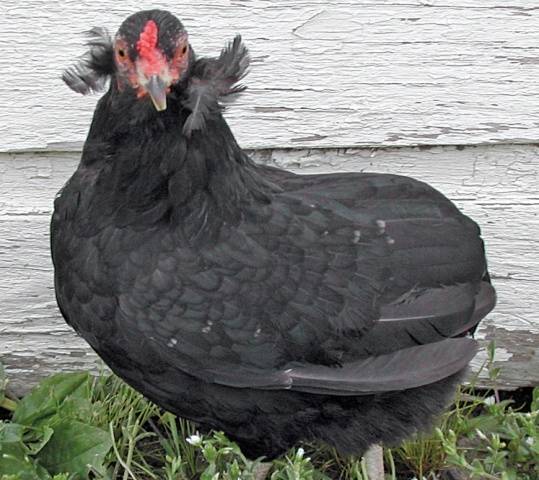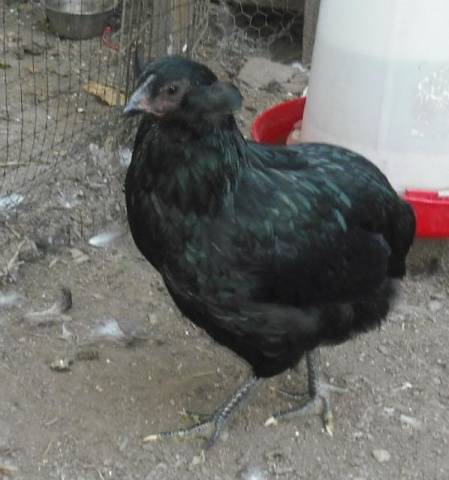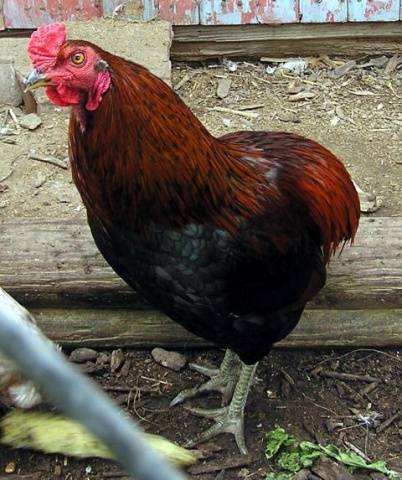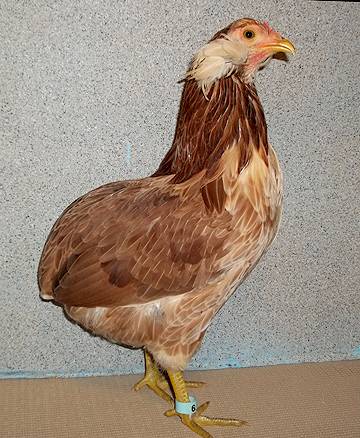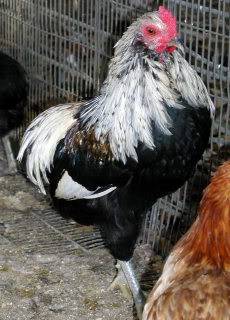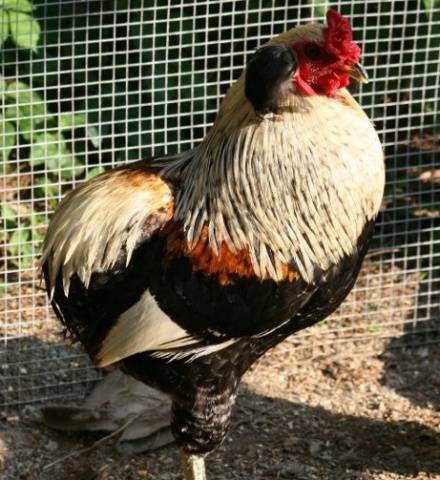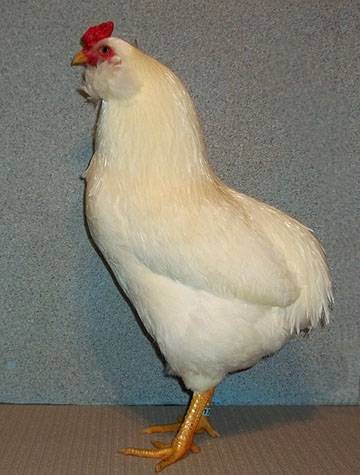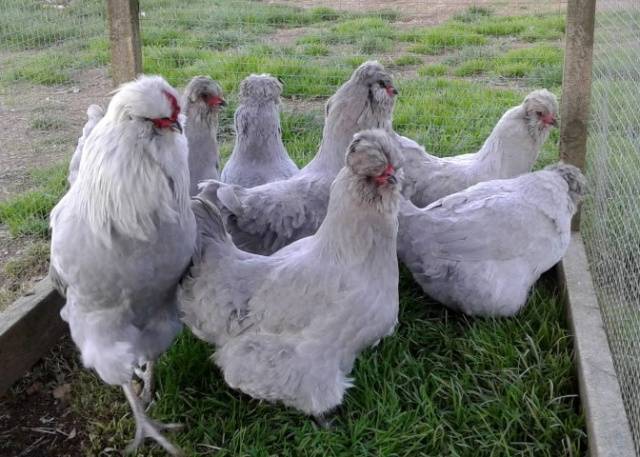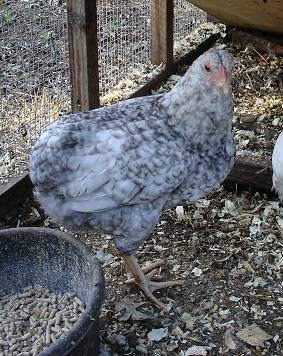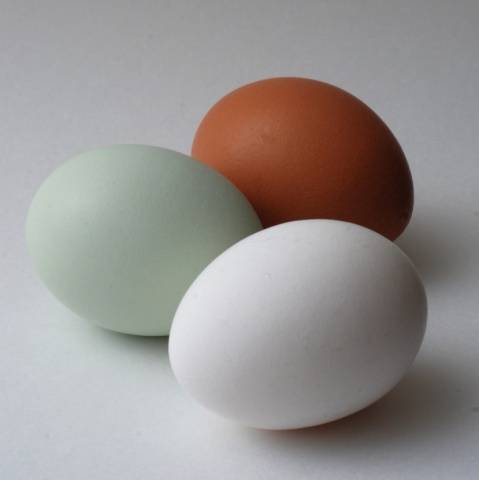Content
Araucana is a breed of chickens with such an obscure and confusing origin, seasoned with an original appearance and an unusual eggshell color that there are many versions about their origin even in America itself. From the almost mystical "ancestors of the Araucans were brought by Polynesian travelers and later the chickens were crossed with the" pheasant-like American bird "(tinama) to obtain blue eggs" to the honest "still no one knows."
Chinamu's eggs are really blue.
And he even somewhat resembles both a chicken and a pheasant at the same time, which is caused by similar living conditions.
Russian-language version of the appearance of the breed
According to the version most widespread in Runet, which even penetrated Wikipedia, the Araucan chickens were bred by the Chilean tribe of Indians long before Columbus discovered the American continents. Moreover, the Indians of one of the Araucana tribes turned out to be not only excellent navigators who managed to deliver pheasants and domesticated chickens from the Eurasian continent, but also excellent genetic engineers. The Indians were able to not only cross a chicken with a pheasant, this in itself is not surprising, they made hybrids capable of breeding. Why did you cross? For green or blue egg shells. Where the pheasants and chicken tails have gone is not mentioned, just in case. And the color of pheasant eggs is different from the color of araucanian eggs.
A much closer version to the truth says that in fact, the region of origin of the ancestors of the Araucanians is Southeast Asia, where the population has long loved cockfighting and bred fighting breeds of chickens, which later became the progenitors of meat chickens. The first mentions of chickens, similar to the Araucan, are actually found almost immediately after the discovery of America by Columbus: in 1526. Considering that the eastern border of the range of this species of chickens fell on Japan and Indonesia, it seems more likely that the chickens were brought to Chile by the Spaniards, who were, in contrast to the Indians, excellent sailors.
The Indians also turned out to be gambling spectators of cock fights, but they tried to select tailless roosters for the tribe, since they believed that the tail interfered with a good fight. The Araucana breed of chickens, apparently, finally took shape in Chile, but after the discovery of America by Columbus.
The Americans, in addition to "but we don't know", have a version that is as close to the real one as possible, explaining at the same time the high death rate of Araucanian embryos in the egg.
English version of the history of the emergence of the breed
Although in the English versions there are suggestions about the import of chickens into South America by the Polynesians, until 2008 no evidence of the presence of the inhabitants of Southeast Asia on another continent was found. Therefore, the question of the appearance of chickens as a species in Chile remains open.
But the breeding of the modern Araucan breed is already well tracked. The Araucan Indians fiercely resisted, first the Incas, and then the White conquerors until 1880.The Indians did raise chickens, but the Araucanians were not among these birds. There were two different breeds: the tailless Colonakas, which laid blue eggs, and the Quetros, which had tufts of feathers near their ears, but tailed and laid brown eggs. In fact, the first mention of South American chickens laying blue eggs dates back to 1883. By 1914, this breed had spread throughout South and Central America.
At the same time, the Indians themselves, most likely, captured chickens during the Dutch colonization, since it was the Dutch who bred the tailless breed of chickens "Valle Kiki" or the Persian tailless. In this case, the version of the appearance of blue eggs due to crosses with pheasants may have grounds, since a small percentage of such hybrids are capable of breeding, and the Dutch, along with chickens, could also bring pheasants. But there is no direct evidence for this, only indirect evidence.
In addition, the hybridization theory implied crossing with tinam, and not with a pheasant. More serious theories explaining the appearance of the blue shell are the theory of mutation and the theory of the action of a retrovirus. But these versions also need further research.
The absence of a tail in captured chickens was very much appreciated by the Indians, as it made it difficult for predators to catch chickens. For this reason, Indian tribes cultivated taillessness in their chickens.
The appearance of tufts in the second breed remains a mystery. Most likely, this is an unfavorable mutation that, in homozygosity, leads to 100% mortality of embryos, and in heterozygosity to death of 20% of the total number of fertilized eggs. But for whatever reasons, religious or ceremonial, the Indians decided that the presence of tufts was a very desirable trait, and they diligently cultivated it.
The history of the Araucana as a breed begins with the Chilean breeder, Dr. Ruben Boutrox, who, after seeing Indian chickens in 1880, returned a little later and received some livestock of Colonacas and Quetros. Mixing these two breeds, he selected "eared" tailless chickens that laid blue eggs - the first Araucanians.
In 1914, Ruben Boutrox was visited by the Spanish professor Salvador Castello Carreras, who introduced Boutrox with his chickens at the World Poultry Congress in 1918. Interested in the breed, breeders from the United States faced great difficulties trying to get these birds. The Indians were defeated and the ancestor breeds of the Araucani mixed with other chickens. The population at Boutrox himself was degenerating without the infusion of fresh blood. Nevertheless, the breeders managed to get a few chickens with parotid tufts of feathers, without a tail and laying blue eggs. These chickens were pathetic crosses with many other breeds and it took a lot of effort to improve their characteristics.
The breeders did not have a single goal, so work on the araucana was slow until 1960, when Red Cox organized a group of breeders dealing with araucana. His untimely death slowed down the work on the breed and was officially registered as the Araucan breed only in the late 70s of the last century.
Thus, there is nothing mysterious or mystical about the origin of chickens of the Araucanian breed. Scientists have questions about the progenitor breeds of the colonakas and quetros.
Description of the breed of chickens Araucana
There are two forms of araucan: full-size and dwarf. Due to the fact that the Araucana is a mixture of two breeds, the Araucana can be either tailed or tailless. In addition, given the lethality of the "eared" gene, even a purebred Araucana may not have parotid feather tufts. The main feature of this breed is blue or green eggs.
Weight of large chickens:
- adult cock no more than 2.5 kg;
- adult chicken no more than 2 kg;
- cockerel 1.8 kg;
- chicken 1.6 kg.
The weight of the dwarf version of the Araucan:
- rooster 0.8 kg;
- chicken 0.74 kg;
- cockerel 0.74 kg;
- chicken 0.68 kg.
Breed standards vary considerably from country to country.For example, the lavender color of the araucana is recognized by the British standard, but denied by the American standard. In total, there are about 20 species of araucan color in the world, but the American Association recognizes only 5 colors for a large variety and 6 for bantams.
Common to all Araucanian chicken standards
Chickens of the Araucana breed of any color can have legs and fingers only of a gray-greenish color, similar to the color of a willow branch. The exceptions are pure white and pure black colors. In these cases, the feet should be white or black, respectively.
The crest is only pinkish, of medium size. It has three rows of teeth, standing upright and arranged in parallel rows from the beak to the top of the head. The middle row is higher than the lateral ones. The number of fingers is only 4. It is preferable that there is no tail and the presence of parotid tufts of feathers, but here the requirements of the standards of different countries contain their own characteristics.
Colors adopted by the standard of different countries for large chickens
American standard allows only 5 types of colors for large chickens and 6 for bantams: black, black-red (wild), silver-necked, gold-necked and white. In dwarf araucans, the following are allowed: black, black-red, blue, red, silver-necked and white colors.
European standard recognizes 20 species of colors in araucans.
English standard allows 12 types: black, black-red, blue, red-blue, variegated black-red, variegated (English version "cuckoo), speckled, lavender, silver-necked, gold-necked, variegated red and white.
IN Australian standard there are black, variegated, lavender, mild speckled, white, plus any colors allowed by the standard of the English organization for the breeding of old fighting chickens. This organization oversees the breeding of three old English chicken breeds, and its standards allow for over 30 color variations. Thus, the Australian Araucanian standard covers almost all chicken colors that exist in the world.
Presence or absence of tails and parotid tufts in various breed standards
The American standard recognizes only a chicken that has parotid tufts of feathers and completely lacks a tail as an Araucana.
Disqualifying signs according to the American standard:
- absence of one or both parotid bundles;
- vestigial tail;
- hemp or feathers in the tail area;
- not a pink comb;
- White skin;
- number of fingers other than 4;
- any egg color other than blue;
- in dwarf araucanas, the presence of a beard and muffs is also unacceptable.
The rest of the standards are not so strict on the appearance of birds, primarily due to the fact that the gene that determines the presence of parotid bundles is lethal.
Australia accepts a tail, recognizing tailless Araucanos.
Britain allows both tailed and tailless Araucanos for breeding. In addition, the British type of araucani boasts a beard and muffs. But this type often does not have parotid bundles. In this way, the British tried to "get away" from the lethal gene.
Among the European lines, the "earless" Araucanians are also often found.
Photos of the most common and interesting Araucan colors
Variegated black and red.
Motley red.
Mottled.
Speckled with mild spotting.
The black.
Black and red.
Silver-necked.
Golden-necked.
White.
Lavender.
Variegated (cuckoo).
Since breeders of various colors usually cross breeders calmly with each other, intermediate variants are possible, such as variegated lavender or red-blue instead of red-black, where the black color of the feather is replaced by blue.
Araucan egg characteristics
The famous blue araucan eggs are not as blue as you might think. Their difference from the eggs of other chickens is that the Araucanian eggs are really blue, while the rest of the "colored" breeds have the true color of the eggshells. The photo shows an araucana egg in comparison with white and brown eggs of other chicken breeds.
Large chickens of the Araucana breed are distinguished by good egg production and produce up to 250 eggs per year. May be bluish or greenish in color.
The eggs are medium in size, weighing about 50 g.
In dwarf araucanas, egg production is lower, up to 170 eggs per year. The mass of a dwarf araucana egg is about 37 g.
Breeding features of the araucan
Chickens of the Araucana breed, unfortunately, are distinguished by low vitality at a young age and difficulty in reproduction in a mature state. Due to the lack of a tail, the Araucanians experience breeding difficulties. Either the tail works as a counterweight, or simply, instead of a tail to protect the body, too many feathers have grown behind. But the facts say that for a more successful fertilization of the hen, both she and the rooster need to cut the feathers around the cloaca and shorten the feathers on the lower back.
Many poultry farmers, when giving instructions for breeding araucan, advise cutting the feathers. Others believe that if this is not done, then over time, fertility will increase on its own, since the Araucanians, unable to naturally reproduce, will die out. Still others cross tailless araucanians with tailed ones, often resulting in a bird that does not meet any standards.
Due to the lethal gene, hatchability of chickens in araucans is very low. The hatched Araucanian chickens also do not understand the joys of life without a tail and do not strive to survive. Among those who decided to live in spite of everyone, there are very few specimens that meet all the requirements of the breeding bird standard. Usually about 1 in 100 chicks can go into further breeding.
Araucana chickens
Reviews of the owners of araucans in the Russian farmsteads
Conclusion
Araucana is a very original and externally interesting chicken, but the breed is poorly suited to novice amateur chicken growers. It is better for beginners to take the simpler breeds first, and experienced ones can experiment with both purebred birds and hybrids.
